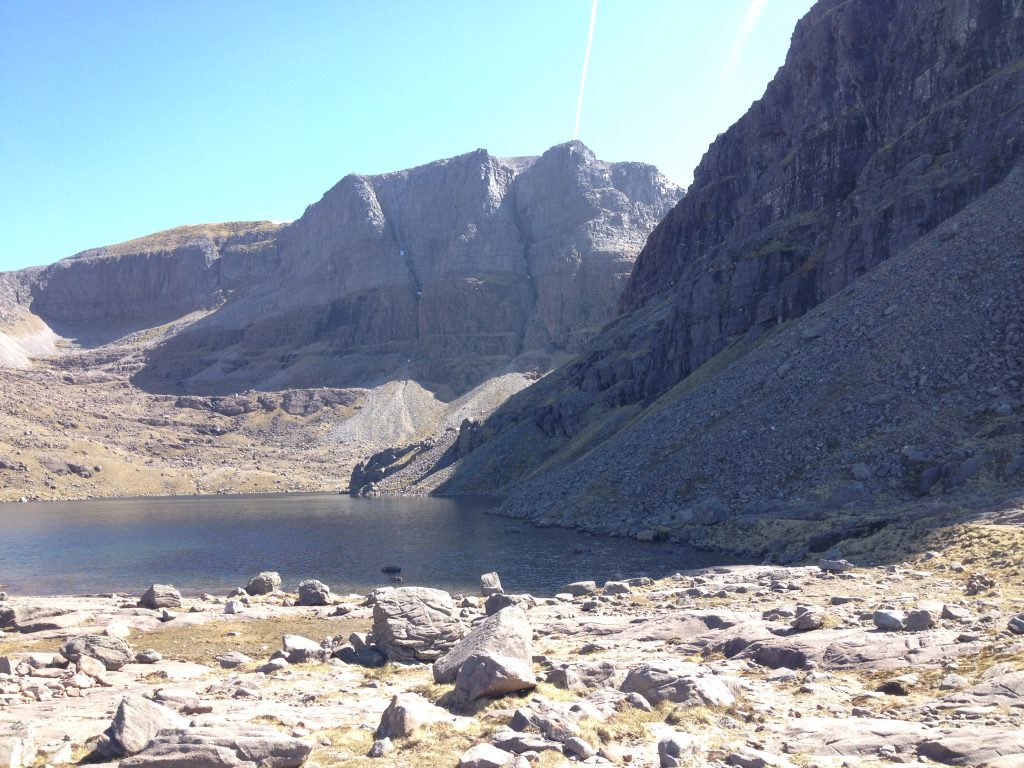
UK Habitat Classification FAQs
Here are some brief answers to typical questions on the UK Habitat Classification and its linked resources, such as suggested survey methodology. Please see if you can find the answer to your query here, or check the User Manual, downloadable from this site. We will update this section from time to time as new questions arise
Primary habitats are the core of the UK Habitat Classification. They are arranged in five hierarchical levels of increasing detail. Levels 2 to 5 are coded with alternate letters and numbers e.g. g3b5. In UKHab mapping rules every habitat feature must have a single Primary Habitat code. More detail can be added to Primary Habitat records with the use of Secondary Codes.
UK BAP priority habitats were those that were identified as being the most threatened and requiring conservation action under the UK Biodiversity Action Plan (UK BAP). The UK list of priority habitats is an important reference source and has been used to help draw up statutory lists of priority habitats in England, Scotland, Wales and Northern Ireland, as required under Section 41 of the Natural Environment and Rural Communities (NERC) Act 2006 (England), Section 7 of the Environment (Wales) Act 2016, Section 2(4) of the Nature Conservation (Scotland) Act 2004, and Section 3(1) of the Wildlife and Natural Environment Act (Northern Ireland) 2011. Statutory lists of priority habitats are updated from time to time.
These are habitats listed in Annex 1 of the Habitats Directive (Council Directive 92/43/EEC on the conservation of natural habitats and of wild fauna and flora), 1992. The Directive is the means by which the European Union meets its obligations under the Bern Convention. The Directive applies to the UK and to its Overseas Territory of Gibraltar and is transposed into UK legislation through the Habitat Regulations (The Conservation of Habitats and Species Regulations 2010 and The Conservation of Offshore Marine Habitats and Species Regulations 2017).
There are five levels in the hierarchy, moving in increasing detail from Level 1 to Level 5. At each level all categories fit it into a single habitat at the next, less detailed level.
Level 1 – simply Terrestrial, Freshwater and Marine.
Level 2 – Ecosystem types.
Level 3 – Broad Habitats, based on Biodiversity Broad Habitats of the UK Biodiversity Action Plan.
Level 4 includes Priority Habitats identified through the UK Biodiversity Action Plan.
Level 5 includes Annex 1 Habitats – that’s Annex 1 of the EU Habitats Directive, 1992.
This depends on the purpose and scope of your survey. Consider using either the Basic Edition, which includes a selection of categories from all levels, or the Professional Edition in their entirety. Generally speaking identification of many categories in the Professional Edition needs a higher level of botanical competence. Habitats should only be recorded where the surveyor has full confidence in their competence to identify the category. Professional training is available.
Secondary codes allow the recording of additional information, linked to the Primary Habitat. They are normally codes that can be used with more than one Level 2 Primary Habitat (e.g. 10 Scattered scrub could be linked with g Grassland or h Heathland and shrub or several other Level 2 Primary Habitats. Secondary codes also include a complete Green Infrastructure typology.
One. Never zero or more than one. This is a fundamental rule in UKHab. Reduce the size of the mapped habitat feature until the whole of it is the selected Primary Habitat.
As many as are applicable to the habitat feature, which may be 0, 1, 3, 4, 5 or 6. It is unlikely that more than 6 will ever be needed. The secondary codes used should apply to the whole of the habitat feature. Reduce the size of the mapped habitat feature until the secondary codes used apply to the whole of the feature.
No. Some categories must always be mapped as one shape only. Others may sometimes be mapped as one shape and sometimes as another. These rules are defined in the definitions document for each habitat category.
Level 1 (Terrestrial, Freshwater, Marine) is not included in the code.
Level 2 uses a lower-case letter, mostly a memorable letter to fit the ecosystem.
Level 3 uses numbers, starting at 1 for each Level 2 ecosystem.
Level 4 uses a lower-case letter, starting at a for each Level 3 section.
Level 5 uses numbers, starting at 5 for each Level 4 section.
There are perhaps some remote rocky mountain ledges, wooded ravines, stretches of shifting sandy or muddy foreshore and unstable cliffs that are predominantly shaped by natural process with very limited human intervention. However, virtually all the habitats we know and love – including, for example, lowland heathlands, coppice woodlands, fen meadows and ancient wood pastures – are semi-natural, a product of the interaction between humans and the natural environment.
Given its size, the UK has a very diverse geology. In general, the underlying bedrock plays a fundamental role in shaping the landscape and habitats of any given area, influencing the soils and topography. The role of bedrock is perhaps seen most dramatically in the limestone pavement of karst landscapes and the cliff and scree habitats of mountainous regions. However, habitats are also influenced by overlying surface deposits. The ongoing natural weathering of rock through the actions of rain, snow and frost and the transportation of material by wind and previously by glaciers all play a role – much of Britain and Ireland are covered with glacial drift (including sands, gravels and boulder clay), which can support a diverse range of habitats.
Soils shape the vegetation through nutrient availability, pH and permeability to water. For example, very sandy substrates generally support well-drained and acid grassland, heathland or oak-dominated woodland; deeper, moist clay or loam soils may support more mixed woodland or meadow and pasture.
Topography influences natural drainage and exposure to wind and cold, interacting with geology and climate. For example, many of our uplands are in the cooler, wetter north and west and here the acidic bedrock combined with waterlogged conditions have contributed to the prevalence of blanket bog on shallower, poorly drained slopes.
In general, the UK weather is relatively mild, a result of oceanic influences that ameliorate the climate substantially (for example, much of the UK is north of Moscow). However, there is significant variation within the UK with dry, steppe-like habitats in East Anglia, parched limestone grassland with Mediterranean species in the south, temperate rainforest with abundant moisture-loving mosses and liverworts on the wet western coasts and peat-forming blanket mire with cotton grasses and carnivorous plants in the cool and moist north. In addition to rainfall, temperature and sunshine hours, wind is also a factor – exposure has created some of our most natural heathlands on mountain tops and maritime cliffs while wind-blown sand continues to shape sand dune systems and helps maintain the unique flower-rich machair grassland of the Hebrides.
Climate also interacts with soils in ways that influence the development of different habitats. For example, relatively well-drained soil under woodland is likely to be rich in nutrients, as those in the mineral soil or derived from decaying leaves are not leached out. However, under colder and wetter conditions, nutrients are washed down through the soil profile and become unavailable to plants and the soil may become waterlogged and anaerobic – conditions suitable for the development of bog. The type of bedrock also plays a role here – on limestone, the calcareous influence is rarely completely leached out and the thin, well-drained and lime-rich soils can support very species-rich grassland or Ash-dominated woodland.
Humans have had a long-standing impact on habitats in the UK, both in terms of their development and their persistence. In most cases, this is through the ongoing interruption of the natural process of succession (through which habitats gradually change over time as soils build up – perhaps most obviously seen in the development of sand-dunes systems. Sometimes, this has been intentional (e.g. felling woodland to create pasture or cropland) but in many cases it was a by-product of activities associated with subsistence lifestyles agriculture (e.g. livestock grazing, reed cutting or peat digging).
Around 11,500 years ago, the glacial ice that covered much of the UK melted, and the first significant movement of people into Britain and later Ireland began. As the climate warmed, trees colonised and spread, and woodland replaced the tundra-like vegetation until it reached its fullest extent in the Mesolithic about 6,000 years ago as the “Wildwood” with regional differences in species composition across the UK, although it probably never covered the entire landscape. Recent archaeological discoveries suggest that Mesolithic people were already managing the extent of woodland and we are clear that 1000 years later, Neolithic people were cutting trees for fuel, building materials and animal fodder. The development of metal tools led to an increased rate of tree felling and livestock grazing and harvesting reduced or prevented tree regeneration. Heathland, grassland and wetland expanded as a result (although changes to a warmer wetter climate may also have influenced the development of extensive blanket bog in the uplands). A combination of tree management, livestock grazing, drainage and land “reclamation”, harvesting (including wood, hay, heather and peat) and cultivation shaped the habitats that have since persisted – although in some cases only just – into the 21st Century. Although habitats have probably always fluctuated in area and character, it was not until the second half of the 20thCentury that radical changes in land use greatly reduced the extent and/or quality of most habitats.
UKHab Version 2.0 was published on 31 July 2023. It replaces Version 1.1 which was released in September 2020.
UKHab data should always be accompanied by the UKHab Version used to collect it. This is achieved by using the UKHab Data Model, which can be downloaded from this website, specifically the UKHab Version attribute in Metadata.
